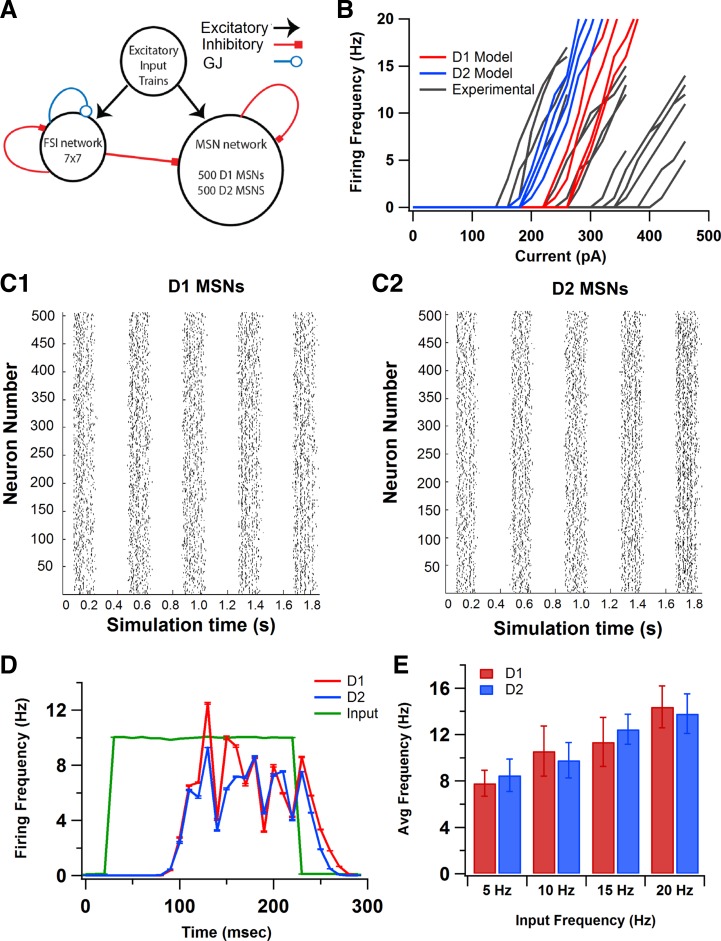Fig. 2.
Model of striatal network with 1,000 MSNs and 49 fast-spiking interneurons (FSIs). A: schematic of network model with MSNs receiving inhibitory input from FSIs and other MSNs. Roughly equal numbers of D1 and D2 MSNs are randomly distributed on a regular grid. FSIs receive input from other FSIs through both GABAergic synapses and gap junction (GJ) connections. Excitatory input to both MSNs and FSIs is provided by simulated Poisson trains. B: heterogeneous distribution of MSNs was generated by changing KAs and N-methyl-d-aspartate channel conductances by ±10%. The range of responses of these D1 and D2 MSN model neurons to somatic current injection was within the range of responses seen experimentally. C: raster plots of D1 (C1) and D2 (C2) MSNs in response to synaptic input in the striatal network. D: firing frequencies of D1 and D2 MSN populations during the upstate, calculated from rasters in C by averaging across the neurons within a class and across upstates. Excitatory synaptic input (green) is illustrated to show latency of MSN firing with respect to input. Both MSN classes have similar firing frequencies (D1 MSNs: 10.77 ± 0.60 Hz; D2 MSNs: 9.59 ± 0.13 Hz). E: D1 and D2 MSNs have balanced firing frequencies across a range of cortical input frequencies.

